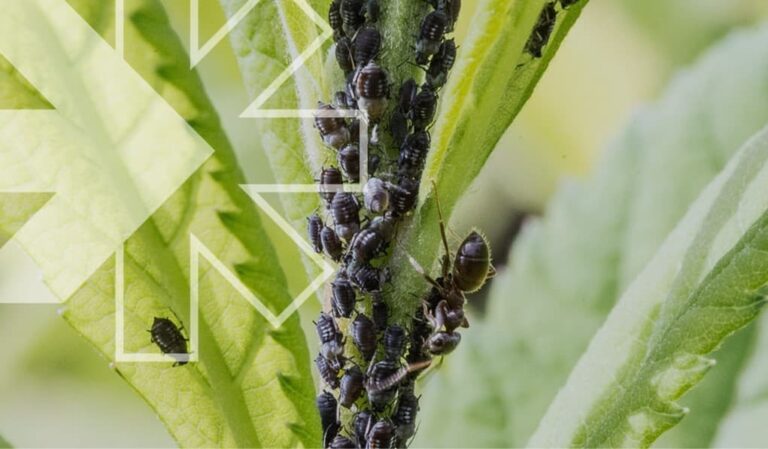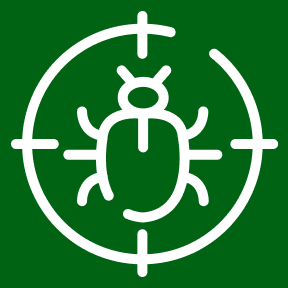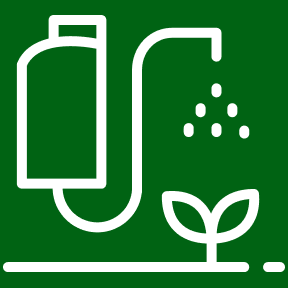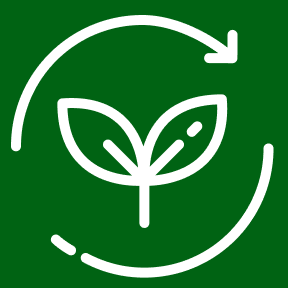The challenge of sustainable pest management
The agricultural sector is facing a growing need for sustainable pest management solutions. Traditional synthetic insecticides, such as organophosphates and carbamates, have been widely used to control pests. However, their persistence in the environment and potential toxicity to non-target organisms have raised significant concerns.
Farmers are facing increasing challenges due to rising input costs, which have risen an average of 13% over the past year, and the growing effects of extreme weather events, now considered a major threat to agricultural profitability.1 These challenges underscore the urgent need for alternatives that balance efficacy with environmental safety.
Natural pyrethrins, extracted from the flowers of Chrysanthemum cinerariifolium offer a proven pest control solution while reducing ecological harm with their rapid biodegradability and low toxicity to mammals, pyrethrins are an essential tool for growers worldwide seeking to adopt more sustainable practices.
Natural pyrethrins are a key active ingredient in products like Santem, Tec-Fort, Xterminator, Piretro Natura, and Temocrop. These products are designed to provide effective pest control solutions while aligning with sustainable agriculture principles.*
Rovensa Next leading innovation in biocontrol
Rovensa Next is at the forefront of innovation in biocontrol, leveraging advanced technologies to maximize the potential of natural pyrethrins.
As part of a holistic portfolio – including bionutrition, biostimulants, biofertilizers, bioinsecticides, biofungicides and other top biosolutions – Rovensa Next provides farmers with integrated solutions to address the challenges of modern agriculture.
Field trials conducted in collaboration with the Universidad Autónoma Agraria Antonio Narro in Mexico have demonstrated the effectiveness of Tec-Fort in controlling pests in key crops such as lettuce, tomato, broccoli, and strawberry. For instance, studies on tomato crops revealed high efficacy against whiteflies, achieving results comparable to certain pesticides while avoiding phytotoxicity risks.

By offering a comprehensive range of products that work in harmony with nature, Rovensa Next empowers farmers to adopt sustainable practices that protect both yields and the environment.
What are pyrethrins and how to they work?
Pyrethrins are a group of six naturally occurring chemical compounds found in the daisy-like flowers of Chrysanthemum cinerariifolium. These compounds act as neurotoxins targeting sodium channels in insect nerve cells, causing paralysis and eventual death. This rapid knockdown effect is effective against a wide range of agricultural pests, including aphids, whiteflies, thrips, leafhoppers, mites, and caterpillars.
Tec-Fort, formulated with 2% pyrethrins, has shown comparable efficacy to reference pyrethrins containing 4% pyrethrins. This advanced formulation offers growers effective pest control with reduced phytotoxicity risk.
Unlike synthetic alternatives, pyrethrins degrade quickly when exposed to sunlight, water, and soil microorganisms, leaving minimal residues and reducing contamination risks. This makes them highly suitable for crops with strict residue limits, destined for export markets. Additionally, pyrethrins are often used in integrated pest management (IPM) programs, where their selective toxicity helps minimize impact on beneficial insects and pollinators, supporting biodiversity in farming systems.3

The role of pyrethrins in Integrated Pest Management (IPM)
Integrated pest management (IPM) emphasizes the use of diverse strategies to control pests, aiming to reduce reliance on conventional pesticides and promote ecological balance. Pyrethrins, with their rapid action and short persistence in the environment, are compatible with other control methods, such as biological agents and cultural practices.
Pyrethrins are particularly effective in high-value crops, such as fruits, vegetables, and ornamentals, where maintaining both yield and quality is essential. Their inclusion in control programs allows for applications within a growing season that will not add residues, enabling long-term pest control while reducing the environmental footprint.⁵

Natural pyrethrins vs. synthetic pyrethroids
While both pyrethrins and pyrethroids are effective insecticides, their differences are critical for understanding their roles in sustainable agriculture.
- Pyrethrins: Derived from natural sources, they are biodegradable and eco-friendly, typically degrading within one to two days. This minimizes their persistence and impact on non-target organisms.7
- Synthetic pyrethroids: Chemically modified analogs of pyrethrins, designed for increased stability and potency. However, their longer environmental persistence raises concerns about accumulation in soil and water, potentially harming aquatic life and beneficial insects.
By choosing natural pyrethrins, growers balance effective pest control and environmental responsibility, particularly in regions with strict regulatory frameworks for pesticide residues.
Are pyrethrins safe to use on vegetables?
Pyrethrins are considered safe for use on vegetables when applied in accordance with recommended guidelines. Their rapid breakdown in sunlight, water, and soil ensure minimal residue levels on treated crops. This makes them particularly suitable for vegetables for export or organic certification that requires stringent residue compliance.
To ensure optimal safety, it is essential to follow pre-harvest intervals specified on product labels. These intervals allow sufficient time for the compounds to fully degrade before the vegetables are harvested and consumed. By adhering to these guidelines, farmers can effectively control pests while maintaining the highest standards of food safety and sustainability.
To explore our full range of biocontrol solutions, visit: Biocontrol Solutions and Bioinsecticides.
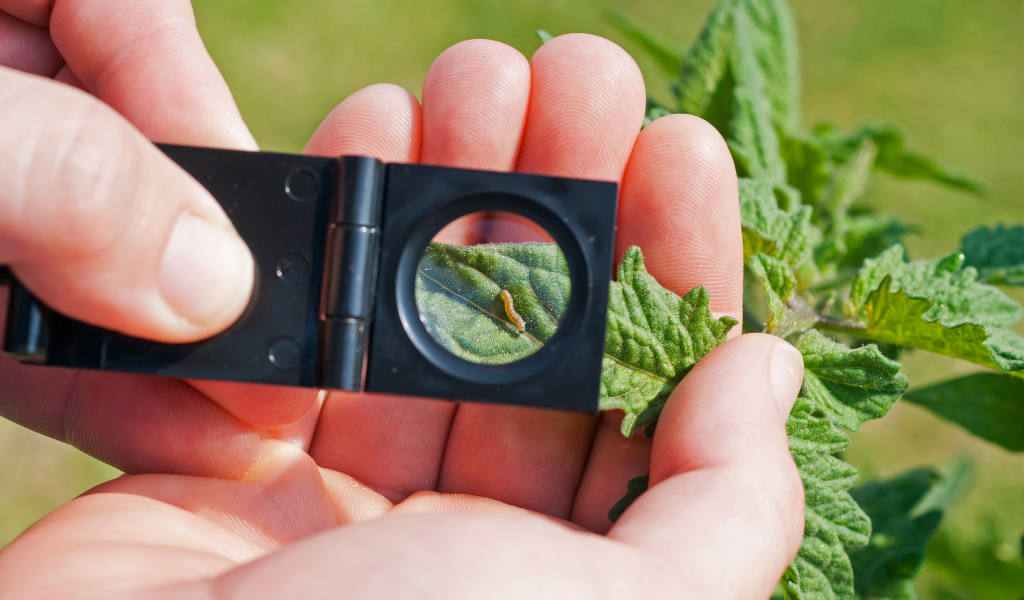
The future of sustainable pest management
Natural pyrethrins represent a significant step forward in the evolution of sustainable pest management. Their rapid action, low environmental impact, and compatibility with IPM strategies make them an invaluable resource for farmers aiming to balance productivity with ecological stewardship. As regulatory frameworks tighten and the demand for effective and innovative biosolutions grows, pyrethrins will continue to play a pivotal role in shaping the future of agriculture. Discover how Rovensa Next can support your transition to sustainable farming by exploring our innovative biocontrol offerings. Visit Rovensa Next today to learn more.
*Rovensa Next is a global business unit that delivers solutions for agriculture around the globe. The information shared here may vary depending on the geography. To confirm the product is available in your country or in case of any questions or for additional information, please contact us using the provided form. Thank you.
References
- McKinsey & Company’s Global Farmer Insights 2024 Report
- Figure 1. Field trial results showcasing the efficacy of Tec-Fort® in controlling whiteflies on tomato crops, achieving similar performance to chemical pesticides while avoiding phytotoxicity.
- Environmental Health Perspectives, “Pyrethrum Flowers and Pyrethroid Insecticides.”
- The natural origin of pyrethrins lies in the flowers of Chrysanthemum cinerariifolium, with their molecular structure showcasing their role as effective insecticides.
- Trends in Plant Science, “The Role of Pyrethrins in Sustainable Agriculture.”
- Image 1. Close-up of aphids feeding on a plant stem, a common agricultural pest effectively controlled by pyrethrins through their rapid contact action.
- Toxicological Profile for Pyrethrins and Pyrethroids, U.S. Department of Health and Human Services.
- Image 2. Close-up of a magnifying glass inspecting a pest on a leaf, demonstrating the careful monitoring required for effective integrated pest management strategies.




